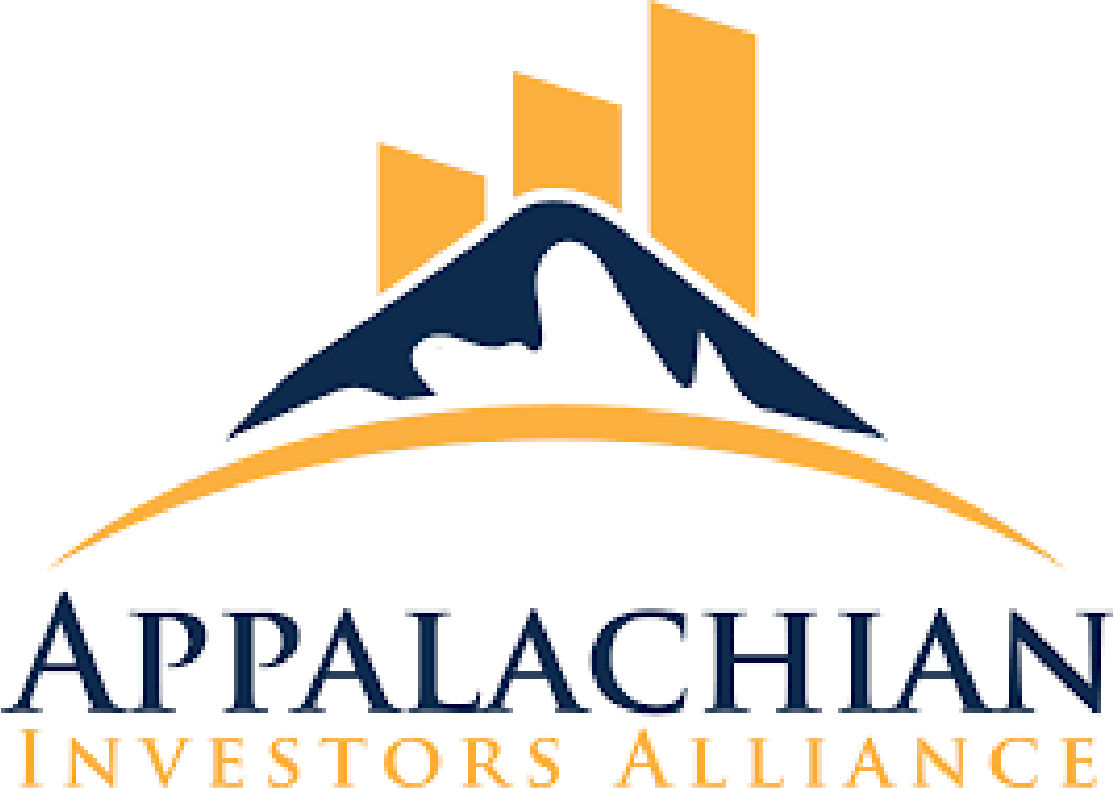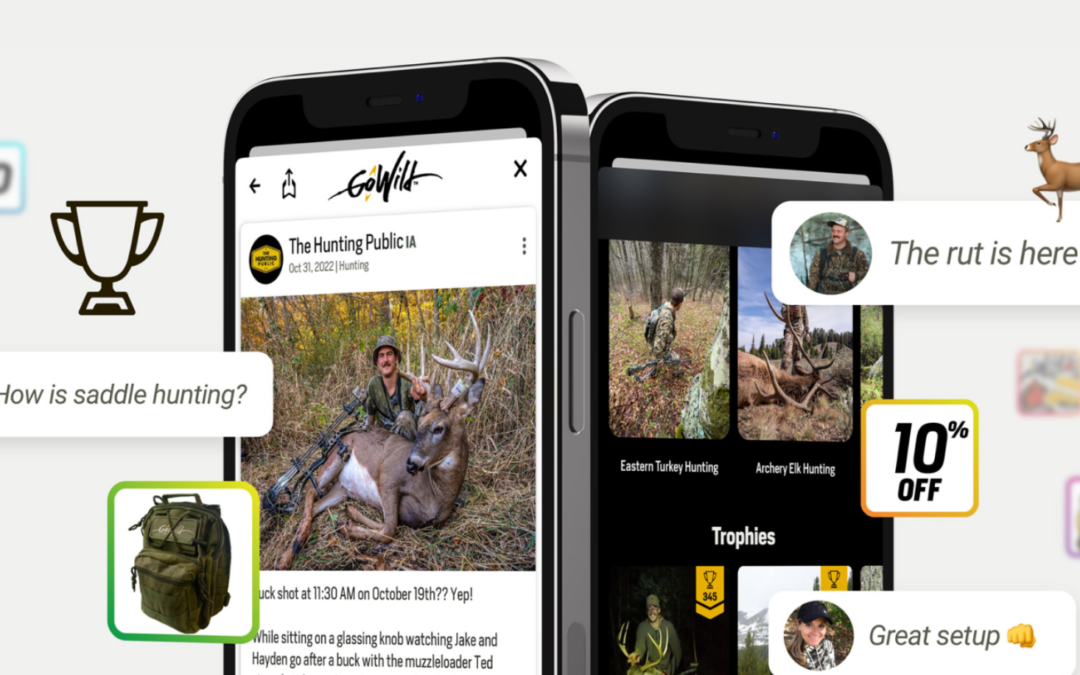Appalachian Traditions go High-Tech
If you visit GoWild at www.TimeToGoWild.com you’ll enter an immersive experience where the largest community of hunters, anglers, and outdoor enthusiasts exchange tips, share stories, buy gear, and generally celebrate their unbridled love of the outdoors.
What you won’t see is the rocky journey it took to get here that began in a basement with some pizza, beer and $500.
That basement was in the home of Brad Luttrell. Brad grew up hunting, fishing and off-roading in Bell County, Kentucky and earned his journalism degree from the University of Kentucky. He went into advertising and spent seven years working at two ad agencies. While living in Louisville, he decided to enthusiastically take up the sport of whitetail deer hunting. He’d hunted squirrels all his life with his dad, but never deer.
Brad quickly recognized a void in social media when he couldn’t find a platform through which to learn about his newfound hobby. “How is there not away for me to connect with people and learn more about this,” he asked himself. “The desire to learn was there but I couldn’t really find a place to do it.”
He found that attempting to reach out to other hunters or share his experiences on existing social platforms was met at best with indifference and at worst with hostility. One platform even banned him. That’s when he decided to create his own.
Taking the Bumpy Road Less Traveled
What he lacked in business experience, he compensated for with his passion for the outdoors and his entrepreneurial spirit. So much entrepreneurial spirit, in fact, that he had been fired from an agency in his advertising days for trying to start a side business. Ironically, one of GoWild’s co-founders was his partner at the time. They bonded through the experience and moved their entrepreneurial spirt forward together.
Unsure of where exactly to begin, Brad immersed himself in episodes of Shark Tank, podcasts and more business books than he cares to remember. He became fascinated with community-based, vertical apps that had large communities surrounding very niche topics. There were successful apps for skiing, for beer, for just about everything it seemed, but no credible equivalent for hunting.
He instinctively knew that this was not something that Silicon Valley was likely to support. “Nobody in the Bay area is going to think of this, right?” he asked rhetorically. He did a quick self-assessment of what he could bring to the table. “I’ve spent seven years in web design, branding and marketing. I’ve got that side covered. I can probably figure this out.” Having never built an app, he reasoned that it couldn’t be that different than a mobile website.
Brad’s cursory research into the hunting and fishing left him stunned. At over $150 billion economi c output per annum at the time, it dwarfed many other enthusiast communities, including running.
He assembled a small team, including Chris Gleim and Zack Grimes, his friend from his advertising days, and they began their journey. They were unsure of their path but confident in their destination.
They soon found that their vision would be realized neither quickly nor easily.
They’d had a hunch that the hunting community would eagerly embrace a tracking-type platform. Equipped with a promising partnership with Garmin and a compelling interface, they put their best foot forward—only to be stopped dead in their tracks. Brad and team quickly learned that hunters did not want to be tracked. “They were afraid their prized hunting spots would be revealed,” Brad said. While the app wouldn’t have actually tracked them in that way, perception is, as they say, everything. Lesson learned.
They responded with a course correction based on integrating outdoor gear into their platform. They reasoned that the hunting community would embrace a space that allowed them to share and comment on the gear they use, and that such a direction would be an effective driver of ad revenue. GoWild would soon have more than half a million outdoor products in their system that users could tag and interact with—more than Amazon, Walmart Backcountry and Cabela’s combined. Things were finally happening.
Then came COVID.
In the COVID-tanked economy, GoWild’s investors were unable to liquidate, and they lost as much as $800,000 of committed funding within a week’s time. Advertisers quickly pulled out and they experienced their worst quarter ever. Increasingly desperate, they turned to state agencies for help, but that, too, was for naught. Another course correction was needed.
One of the greatest challenges facing Brad and his team was not what they were trying to do, but where they were trying to do it. “Investors in Appalachia tend to prefer utilizing tax credits and real estate deals,” he said. “This type of technology scared a lot of people away.” GoWild turned to the Appalachian Investors Alliance for guidance.
“AIA did a very thorough job of looking at our team and giving us honest feedback and recognizing strengths and weaknesses, areas that we needed to build up and concentrate and other areas where our efforts weren’t efficient,” Brad said. AIA helped GoWild model out projections and where they needed to be in the near and long term. Their thorough due diligence was a gamechanger for GoWild.
That due diligence also helped seal Tri State Angel Investment Group’s (TSAIG) decision to invest in GoWild and their team. TSAIG, which is currently operating under its 3rd fund since 2014, had never invested in an ecommerce web/app based company prior to GoWild. “Brad and Zack did a great job explaining the GoWild business to our investors. They were able to remove many concerns that TSAIG had with past opportunities in this space”, explained Don Perry, TSAIG’s Chairman. “While it’s important to present well, as GoWild did, our investors still rely heavily on AIA’s due diligence when making the final investment decision. Without a doubt, It has led to improved decision making.”
Detouring without Derailing
“We had to figure out a new model,” Brad said. “We have all this gear data,” Brad and his team thought at the time. “What if actually sell gear?” Far from a retail-only approach, the platform would be interactive, where community members could relate freely and uncensored. The gear and retail component would only be one part.
GoWild is now an enriching social community where members can share experiences, learn from one another, and earn rewards along the way. Simply joining the platform entitles members to $10 to spend on whatever they like. Brad adds that members can feel good about their support for GoWild. “We donate 1% of our profits to a nonprofit camp where kids learn how to fish, hunt and enjoy the outdoors.
Post-COVID, GoWild is seeing revenue growth approaching nearly 40% quarter over quarter. Badlands, Vortex Optics and Garmin are among their best-selling products.
Brad and the GoWild team look back on their journey with equal amounts pride and humility. “I’ve been laughed out of the room more than once over the years,” he said. His initial fund-sourcing savvy meant little more than Googling “how to raise money for an idea.” “Our projections and first attempts at valuations were ridiculous,” Brad said with a laugh. But their perseverance and willingness to pivot when necessary was rewarded with a gradual but solid buildup of credibility, including an investment from Stadia Ventures, one of the world’s top sports accelerators.
Building a Culture
Today, Brad describes the GoWild team as hyper-focused on building their platform across the three most popular outdoor activities in hunting and fishing right now—whitetail deer hunting, turkey hunting, and bass fishing. “We have employees in six different states, including Kentucky, Indiana, Missouri, Maine, Virginia and Connecticut,” he said.
What inspires Brad most about GoWild isn’t based on revenue. “I’m getting to build a culture that treats people right and we get to see other people getting excited about the culture we have,” he said.

